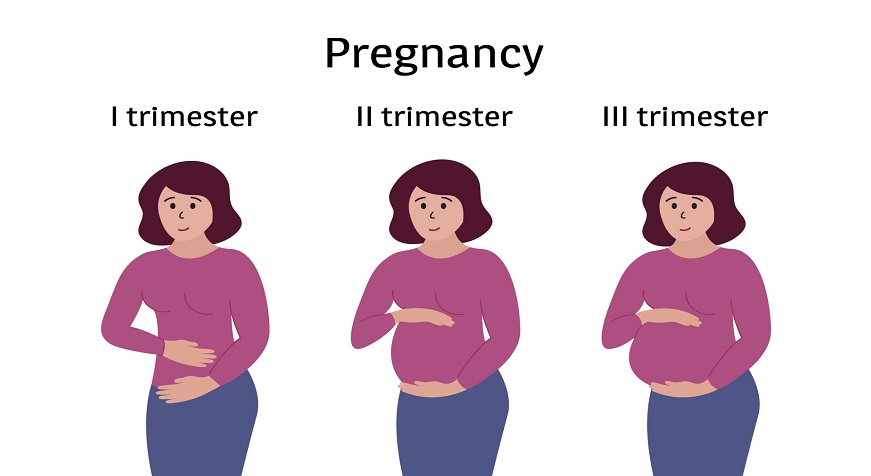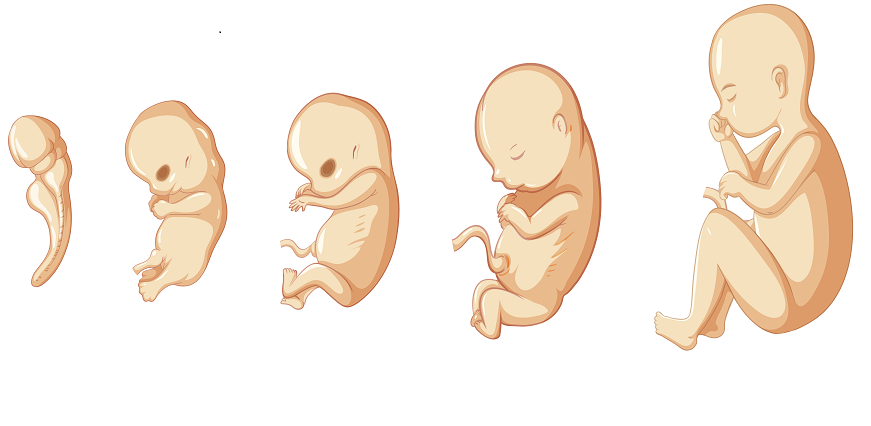The Double Marker Test in Rudrapur is carried out along with the NT scan, an ultrasound in which measurements are taken for the Nuchal fold of the foetus. The Double Marker Test in Rudrapur results are interpreted on the basis of these measurements. This test helps detect chromosomal abnormalities such as Down syndrome, Edwards syndrome, and Patau syndrome. It measures two key biomarkers, free Beta hCG and PAPP-A, present in maternal blood. The Double Marker Test in Rudrapur report provides a ri
The Double Marker Test in Rudrapur is carried out along with the NT scan, an ultrasound in which measurements are taken for the Nuchal fold of the foetus. The Double Marker Test in Rudrapur results are interpreted on the basis of these measurements. This test helps detect chromosomal abnormalities such as Down syndrome, Edwards syndrome, and Patau syndrome. It measures two key biomarkers, free Beta hCG and PAPP-A, present in maternal blood. The Double Marker Test in Rudrapur report provides a risk assessment based on these values. A low-risk result indicates a lower probability of chromosomal anomalies, whereas a high-risk result may require further testing, such as NIPT or amniocentesis. It is commonly recommended for women above 35 or those with a history of genetic disorders.
Preparations Before a Double Marker Test in Rudrapur
The dual marker test is an important prenatal screening that helps assess the risk of chromosomal abnormalities in the foetus. It is usually performed between the 9th and 13th weeks of pregnancy. To ensure an accurate result, it is a must for the patients to maintain proper care before the test. So, for the preparation before the test, there are a few instances that the patients must keep in mind.
Fasting is not required for the dual test for pregnancy, so you can eat and drink as usual before the test. However, it is advisable to stay hydrated, as this can help with blood sample collection. Inform your doctor about any medications you are taking, as some may interfere with the test results.
The Double Marker Test in Rudrapur report is interpreted alongside the NT scan results, so scheduling both on the same day is ideal. It is recommended to stay calm before the test, as stress and anxiety can affect hormone levels. Following your doctor’s instructions and ensuring timely testing will help in obtaining reliable and accurate results.
What To Expect During the Procedure
The dual marker blood test is a prenatal screening conducted between the 9th and 13th weeks of pregnancy to assess the risk of various chromosomal abnormalities and to check if the development of the foetus is normal. The test is simple, quick, and non-invasive. A healthcare professional draws a small sample of blood from the mother’s arm, which is then analysed for levels of Free Beta hCG and PAPP-A, two biomarkers essential for risk evaluation.
The dual test for pregnancy is often performed alongside an NT scan to provide a more accurate risk assessment. The test results are interpreted based on specific values. The Double Marker Test in Rudrapur normal range varies depending on maternal age and gestational week, but generally, a lower Free Beta hCG level and a higher PAPP-A level indicate a lower risk. If the report states that a Double Marker Test in Rudrapur is low risk, it suggests minimal chances of chromosomal abnormalities, providing reassurance to expectant parents. However, if a high-risk result is detected, further diagnostic tests such as NIPT or amniocentesis may be recommended to confirm the findings. This screening is safe and essential in guiding early medical decisions for a healthy pregnancy.
Why Doctors Recommend Double Marker Test
The Double Marker Test in Rudrapur is conducted during pregnancy to determine if the unborn child has a risk of any kind of neurological disorders like Down’s syndrome, etc. Generally, this test is prescribed when the age of pregnant women is above 35 years, as this is the time when the risk of the foetus developing chromosomal abnormalities is higher.
This test needs to be conducted within a specific time window, between the 8th and 14th weeks of gestation. As the name suggests, this test is used to check two markers:
The dual marker test time is crucial for accurate results, as these markers' levels change significantly throughout pregnancy. The double marker report combines blood test results with other factors like maternal age, weight, and ultrasound findings to calculate risk ratios. Understanding dual marker test for pregnancy results requires professional interpretation, as they indicate probability rather than definitive diagnoses.
The uses of Double Marker Test in Rudrapur extend beyond Down's syndrome screening to include detection of other chromosomal conditions like Edwards syndrome (Trisomy 18) and Patau syndrome (Trisomy 13). If elevated risk is identified, doctors may recommend further diagnostic tests such as amniocentesis or chorionic villus sampling. It's worth noting that this screening is entirely optional and should be discussed thoroughly with healthcare providers to understand its implications and limitations. The test results are typically available within 3-5 working days, allowing for timely decisions regarding additional testing if necessary.
Types of Birth Defects Identified by a Double Marker Test
A Double Marker Test in Rudrapur is a prenatal screening that helps identify the risk of various chromosomal abnormalities in the unborn baby. It is primarily used to detect genetic disorders that can impact the baby’s development. Conducted between the 9th and 13th weeks of pregnancy, this test analyses two key markers, Free Beta hCG and PAPP-A, to assess the likelihood of certain birth defects.
One of the most common conditions detected by this test is Down syndrome (Trisomy 21), a genetic disorder that leads to developmental delays and intellectual disabilities. Additionally, the test helps in identifying Edwards syndrome (Trisomy 18), a severe chromosomal abnormality associated with heart defects, organ malformations, and a high mortality rate. Another serious condition screened is Patau syndrome (Trisomy 13), which can cause severe neurological and physical abnormalities, often leading to life-threatening complications.
While the Double Marker Test in Rudrapur does not provide a definitive diagnosis, it helps doctors determine whether further diagnostic tests, such as NIPT or amniocentesis, are needed. Early detection allows parents to make informed medical decisions and prepare for specialised care if necessary. This screening is an essential part of prenatal healthcare, offering valuable insights into foetal health and ensuring better pregnancy management.
Understanding the Test Results
The dual marker test is a crucial prenatal screening that assesses the risk of chromosomal abnormalities in an unborn baby. The results of this test are categorised as normal (low risk), high risk, or low levels of specific markers. The interpretation of results is based on the levels of Free Beta hCG and PAPP-A in the mother’s blood. These values are then compared with the Double Marker Test normal range to determine potential risks.
Normal (Low Risk) Results
A normal result in the dual marker blood test indicates that the probability of chromosomal abnormalities, such as Down syndrome, Edwards syndrome, or Patau syndrome, is minimal. This is classified as a low-risk result. Generally, a Double Marker Test normal range consists of:
- Free Beta hCG: Moderate levels suggest normal foetal development.
- PAPP-A: Higher levels indicate healthy placental function and foetal growth.
A low-risk result reassures parents that the pregnancy is progressing normally and usually does not require further genetic testing unless other risk factors are present.
High-Risk Results
A high-risk result suggests an increased likelihood of chromosomal abnormalities. In such cases, doctors may recommend further diagnostic tests, such as NIPT (Non-Invasive Prenatal Testing), amniocentesis, or chorionic villus sampling (CVS), for confirmation. A high Free Beta hCG level and a low PAPP-A level are often associated with a higher risk of genetic disorders. However, this result is not a definitive diagnosis but rather an indication that further testing is needed for accurate assessment.
Low Levels of Specific Markers
If both Free Beta hCG and PAPP-A levels are significantly low, it may indicate issues with placental function or a higher risk of foetal growth restrictions. Low PAPP-A levels have been linked to pregnancy complications such as pre-eclampsia, low birth weight, or premature delivery. In such cases, doctors closely monitor the pregnancy and may recommend additional screenings to ensure the baby’s well-being.
Understanding the results of the dual marker test is essential in making informed pregnancy decisions. While a low-risk result provides reassurance, a high-risk or abnormal result helps in early detection and timely medical intervention.
Tips to Reduce the Risk of Birth Defects
Reducing the risk of birth defects during pregnancy involves adopting a healthy lifestyle, undergoing essential screenings, and following medical guidance. Regular prenatal care plays a vital role in ensuring the well-being of both mother and baby.
One of the most effective ways to detect potential abnormalities early is through prenatal screening through dual marker test in pregnancy. This test helps assess the likelihood of chromosomal disorders like Down syndrome. The dual marker blood test analyses two key markers, Free Beta hCG and PAPP-A to evaluate foetal health. The Double Marker Test in Rudrapur report provides crucial information, enabling doctors to recommend further tests if necessary.
Maintaining a balanced diet rich in folic acid, iron, and essential vitamins can significantly lower the risk of neural tube defects. Avoiding harmful substances such as alcohol, tobacco, and excessive caffeine is equally important. Expectant mothers should also stay physically active, manage stress, and follow prescribed prenatal supplements.
Understanding the Double Marker Test in Rudrapur cost and its importance encourages timely screening, especially for women over 35 or those with a family history of genetic disorders. Early detection and medical intervention can help ensure a healthy pregnancy and reduce the chances of birth defects














 7982100200
7982100200




 Test Name
Test Name  Also Known as
Also Known as  Sample Type
Sample Type  Gender
Gender  Age group
Age group  This Test Includes
This Test Includes  Price
Price@3x.png)




































 To reach our help desk call 9213188888
To reach our help desk call 9213188888.png)